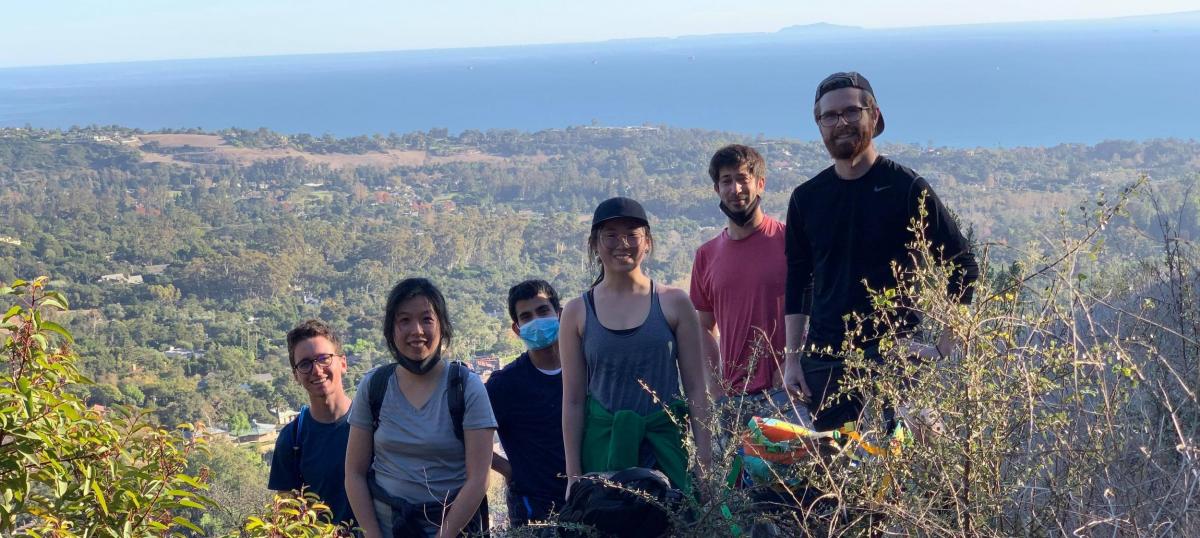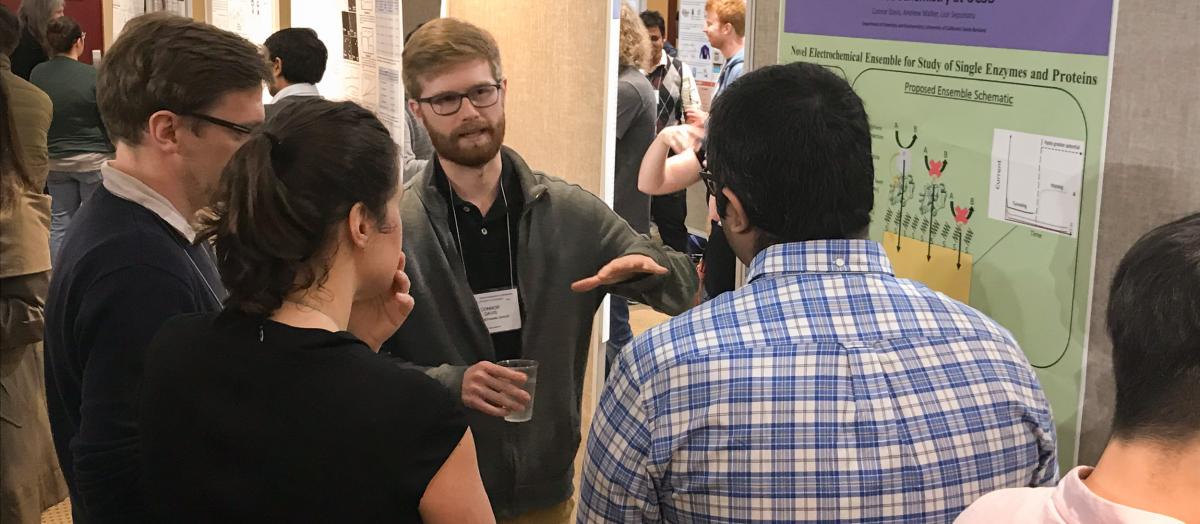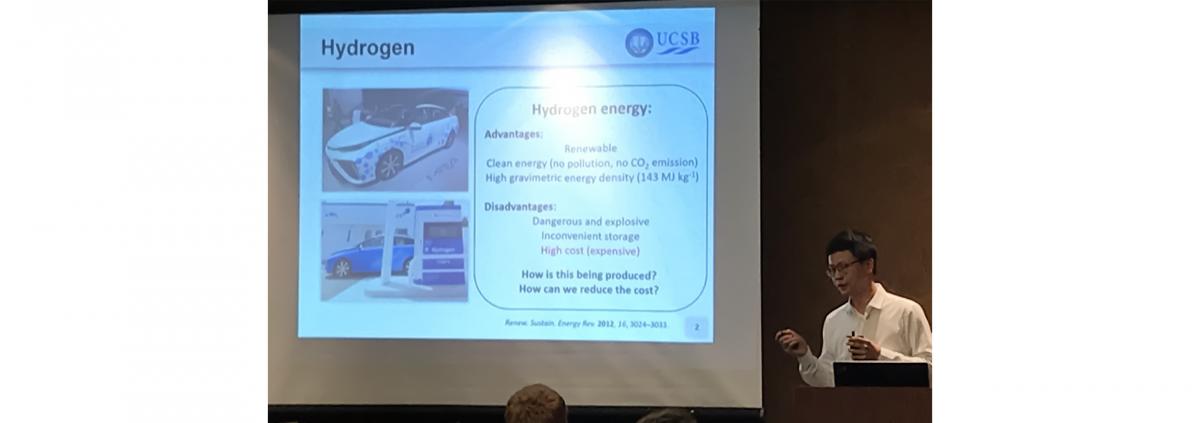Welcome to the Electrochemistry Lab at UCSB!
Electrochemistry is experiencing a "renaissance" in recent years in the fields of organic electrosynthesis, battery engineering, and "single-entity electrochemistry." Using a set of electrodes, we can probe reduction or oxidation reactions of species in solution or in the form of immobilized films on conductive surface. Using state-of-the-art potentiostatic and galvanostatic modes, we can learn about the thermodynamics of the reaction and the kinetics of charge transfer. In lab, we are exploring charge transfer phenomena both at the macroscopic level and at the individual molecule level. Some of the main interests are:
Bioelectrochemistry
Our lab is focused on the interface between biological molecules and conductive materials. We explore complex reactions such as protein-DNA binding, enzymatic electrocatalysis, and coacervate-influenced redox reactions. For all of these complex biological systems, we have a common theme of investigating and unraveling the mechanism of charge transfer.
Single-entity electrochemistry
We are interested in understanding how electrocatalysis occurs at the molecular level and compare this to the "classical" ensemble reaction. We are specifically interested in nano-scale phenomena that are related to sustainable energy production (.e.g. hydrogen evolution, ammonia oxidation, polymer charging).
Nanoparticle biosynthesis
Shifting from using inorganic molecules to organic biological molecules as the source of reducing agent for nanoparticle synthesis is in demand. However, control of the isze and shape of the nanoparticles using biological reducing agents is thus-far limited. Our lab is focusing on expanding the scope of biomolecules that can be used for nanoparticle synthesis, with our main interest lying in both the mechanisms for nanoparticle formation and in the applications that may arise.
Liquid-cell TEM coupled to electrocatalysis
One of the main efforts in electrocatalysis is to couple between structure and catalytic efficiency. With state of the art microscopy, we are now able to probe reactions in solution with nanometer resolution. Coupling low-noise electrochemical set-ups to this high-resolution technique enables us to correlate between the two, satisfying both advanced imaging capabilities and cutting-edge femtoampere detection of heterogeneous charge injection.
Miscellaneous
Photo albums







